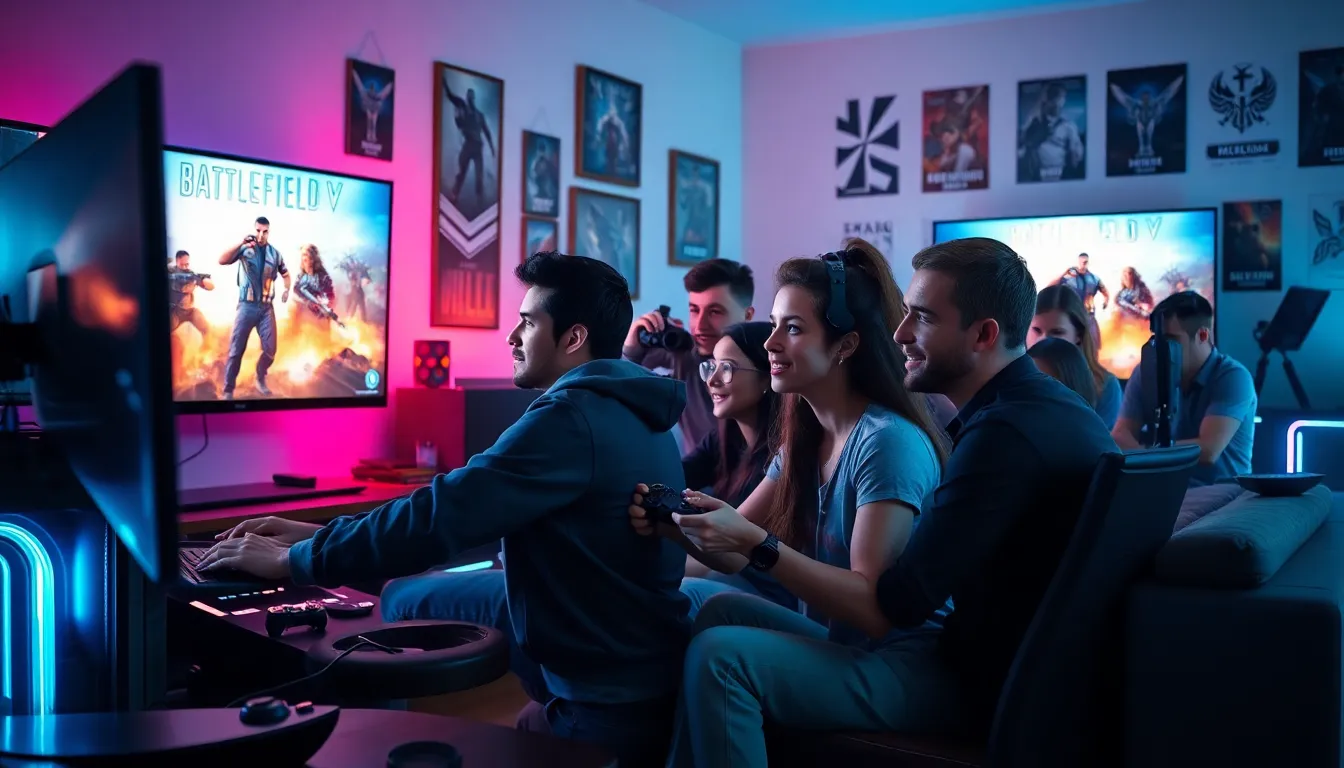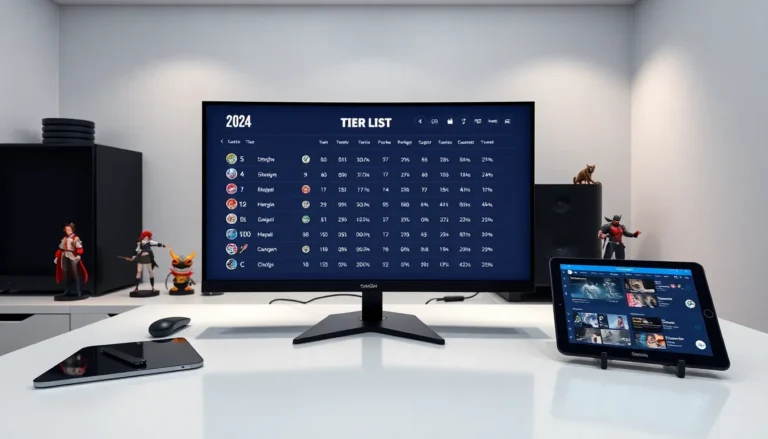Table of Contents
ToggleIn the ever-evolving world of gaming, crossplay is like that extra slice of pizza at a party, everyone wants a piece of it. Battlefield V has staked its claim in this arena, allowing players across different platforms to join forces or battle it out. But what exactly does this mean for gamers? Is it just a fancy buzzword or a game-changer in the Battlefield universe? Let’s jump into understanding crossplay in Battlefield V, its benefits, how it works, and tips on making the most out of this exciting feature.
Understanding Crossplay in Battlefield V

Crossplay in Battlefield V refers to the ability for players on different gaming platforms, like PlayStation, Xbox, and PC, to compete or cooperate with each other. This means that your friend’s sniping skills on Xbox can now be pitted against your fancy mouse and keyboard setup on PC. But it’s not just about mixing platforms: it transforms the entire gaming community, allowing friends to connect, regardless of their device preference.
For years, gamers remained confined to their console or computer ecosystems, making it tough to unite with friends on different platforms. Battlefield V breaks those barriers, bridging the gap between consoles and PCs. This shift invites both competitive and casual players to join the same battlefield, sharing strategies, laughs, and the occasional friendly roast.
Benefits of Crossplay for Players
The benefits of crossplay go beyond just the ability to play with friends. One of the most significant advantages is the larger player pool. When players from different platforms can clash on the virtual battlefield, matchmaking becomes faster and more diverse. No more waiting endlessly for a game to start: increased participation translates to quicker matches, keeping the action flowing.
Also, crossplay allows gamers to select their preferred platform without worrying about losing access to friends. This means that if someone decides to switch from Xbox to PC, they can take their friends along for the ride. It also enhances the community aspect, with collaboration fostering friendships that may not have formed otherwise.
Finally, having a larger selection of players means more competition. This environment can inspire players to improve their skills, as they engage with a broader array of gaming styles and tactics. With crossplay, the battlefield is not only about shooting but also about adapting strategies on the fly.
How Crossplay Works in Battlefield V
So how exactly does crossplay function in Battlefield V? Under the hood, it requires the game servers to manage communications between different hardware ecosystems. This is where the magic happens: crossplay utilizes a unified server infrastructure to connect players seamlessly.
When a player logs into their platform of choice, they can see and engage with friends on any supported system. Making sure everyone enjoys a similar experience is a priority for developers. Hence, the mechanics of the game remain consistent, regardless of whether a player is firing from an Xbox controller or using a PS4 touchpad.
To enhance this experience, the game implements Fair Play guidelines which help balance competitive interactions, ensuring that no specific platform has an advantage over others. Developers continuously work on updates to mitigate any potential imbalances, allowing players to focus on what matters most: victory.
Crossplay Compatibility Across Platforms
Crossplay compatibility is crucial to its success. Battlefield V allows for seamless interaction between PlayStation 4, Xbox One, and PC players. Unfortunately, many players were hoping for cross-generation play, but that’s another discussion for a different day.
For instance, if a gamer is enjoying the action on Xbox One, they can now crystal clear voice chat with their friend who’s swaggering on a PS4. Such compatibility makes tactical cooperation more achievable. For many, this synergy can mean the difference between achieving that coveted victory or facing defeat.
Also, communication tools are optimized for crossplay, making it easy for players on different consoles to strategize effectively. While voice chat is a crucial feature, players can also use text chat, ensuring everyone’s voice is heard loud and clear. Clear communication enhances teamwork, allowing players to act cohesively during firefights.
Challenges and Limitations of Crossplay
But, like all things in gaming, crossplay has its hurdles. One of the prominent challenges is disparity in input methods. While PC players often boast faster response times due to their mouse and keyboard setup, console players bring their own skill set to the table with controller play. This leads to a potentially unbalanced competition, where both sides might view crossplay differently.
Also, not everyone is a fan of crossplay. Some players prefer a level playing field, arguing that different platforms should not compete against each other. This divide can lead to discussions in the community about the relevancy and fairness of crossplay.
Also, technical issues can arise. Connectivity problems, unique bugs related to different platforms, and lag can diminish the overall experience. Players often face these frustrations, and developers must be vigilant about updates to maintain balance.
Tips for Engaging in Crossplay
For those looking to jump into the crossplay experience, there are a few tips to ensure success. First, communication is key. Use voice chat or text systems effectively to enhance team coordination. When players strategize together, victories feel sweeter.
Second, familiarize yourself with the strengths and weaknesses of your platform. Understanding how your setup interacts with others can improve gameplay. For instance, PC players may want to tone down their aim sensitivity to make quick adjustments easier during intense firefights.
Finally, don’t hesitate to adapt and learn from players on different systems. Observing various play styles can broaden your own approach and help in refining strategies. Embrace the challenge and remember that every battle is a learning opportunity.





